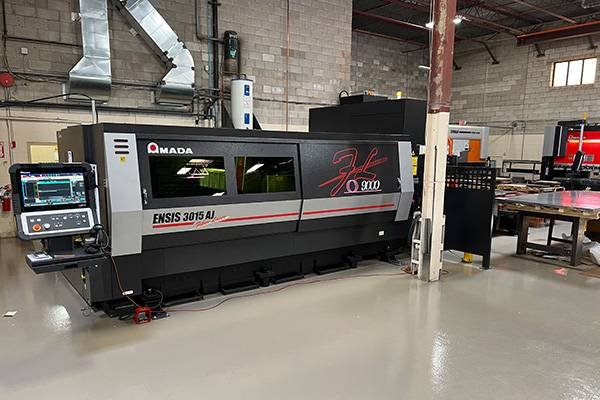Modern manufacturing demands precision, speed, and cost-efficiency—especially when it comes to metal cutting. Among the leading technologies available today, laser metal cutting and waterjet cutting are two powerful contenders, each offering distinct advantages depending on the application.
Selecting the right method is critical to achieving clean results, minimizing waste, and optimizing turnaround times. Whether working with sheet metal, composites, or thick plates, understanding how each cutting process functions can help determine the most effective choice for a given project.
1. What is Laser Cutting?
Laser cutting is a thermal-based process that uses a concentrated beam of light to melt or vaporize material along a programmed path. It’s highly precise and commonly used across various industries for cutting metals such as stainless steel, mild steel, and aluminum.
Two major types of systems are used in laser metal cutting: CO₂ lasers and fiber laser cutting machines. CO₂ lasers are gas-based and suitable for both metal and non-metal materials, while fiber laser cutting relies on solid-state technology, offering faster speeds and greater efficiency, particularly in metal fabrication. Fiber laser cutting is increasingly popular due to its low maintenance requirements and superior energy efficiency.
Laser cutting in Mississauga has become a go-to solution for manufacturers looking to produce high-quality parts for industries like automotive, electronics, and consumer products.
2. What is Waterjet Cutting?
Waterjet cutting works by propelling a high-pressure stream of water, often mixed with an abrasive substance, to erode and slice through the material. Unlike laser cutting, this process is non-thermal, which means there’s no heat-affected zone, making it ideal for materials that can deform or degrade under high temperatures.
This technique can cut through a wide variety of materials, including metals, glass, stone, ceramics, and plastics. It’s commonly used in aerospace, construction, and custom fabrication projects where material integrity is critical.
Waterjet systems provide high versatility, especially when handling composite layers or thick, dense materials that other cutting technologies may struggle with.
3. Key Differences Between Laser and Waterjet Cutting
- Cutting Mechanism: Laser metal cutting uses heat from a light beam, while waterjet relies on the mechanical force of pressurized water and abrasive particles.
- Material Compatibility: Laser cutting is highly effective for metals and thin materials, whereas waterjet cutting works with a wider range, including heat-sensitive and thick materials.
- Precision and Edge Finish: Fiber laser cutting provides sharp, clean edges with minimal finishing required. Waterjet cutting also delivers smooth finishes but excels where heat-related distortion must be avoided.
- Heat-Affected Zones: Laser cutting can create heat-affected areas, whereas waterjet cutting preserves the material’s original structure.
- Speed and Efficiency: Fiber laser cutting is generally faster, especially for repetitive tasks involving thin to medium-thickness metals.
- Thickness Capabilities: Waterjet cutting handles much thicker materials compared to laser systems, making it the better option for heavy-duty projects.
4. Cost Comparison
When comparing operational costs, fiber laser cutting tends to be more energy-efficient and faster, making it economical for high-volume production. Its ability to cut quickly with minimal post-processing can reduce overall project time and cost.
Waterjet systems, though versatile, have higher operating costs due to the consumption of abrasives, greater maintenance, and slower speeds. However, when cutting expensive or layered materials, the reduction in waste and risk of heat damage may offset those costs.
For projects focused solely on metal and requiring speed, laser cutting is typically more cost-effective. When material versatility or thickness is a key concern, waterjet may provide better long-term value.
5. Environmental and Safety Considerations
Laser cutting in Mississauga fabrication shops is generally clean and quiet, though it may produce fumes and require proper ventilation systems. The use of fiber laser cutting also reduces energy consumption, aligning with sustainable manufacturing goals.
Waterjet cutting, while free from airborne contaminants and heat emissions, generates more noise and requires careful handling of slurry waste. Both processes require safety measures, but waterjet systems tend to involve more complex maintenance and set-up precautions.
6. Which Cutting Method Is Best for Your Project?
Laser metal cutting is ideal for:
- Thin to medium-thickness sheet metal
- Projects requiring fast turnaround
- High-precision cutting with minimal finishing
- Applications suited for fiber laser cutting efficiency
Waterjet cutting is the better choice for:
- Thicker or multi-material layers
- Temperature-sensitive materials
- Projects where heat distortion must be avoided
- Jobs involving glass, stone, or composites
Ultimately, the decision depends on material type, tolerances, project size, and overall budget.
Final Take: Making the Right Choice for Precision Cutting
Laser cutting and waterjet cutting each bring unique strengths to the table. Laser metal cutting—particularly fiber laser cutting—offers high-speed, precise results for thin to moderately thick metal projects. Waterjet cutting excels in versatility and thickness capacity, making it a reliable option for challenging or heat-sensitive materials.
For manufacturers in Mississauga looking for dependable cutting solutions, Weldflow Metal Products provides Fiber Laser cutting technology only, plus Weldflow has a turret punch press for blanking processes and the industry knowledge to guide the right process selection.
Contact Weldflow Metal Products to ensure the success of your next metal fabrication project with the cutting method best suited to your needs.







